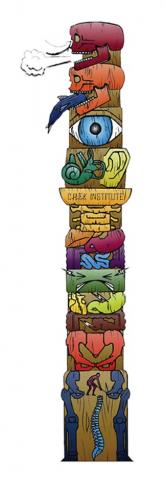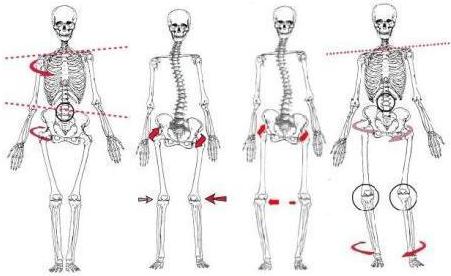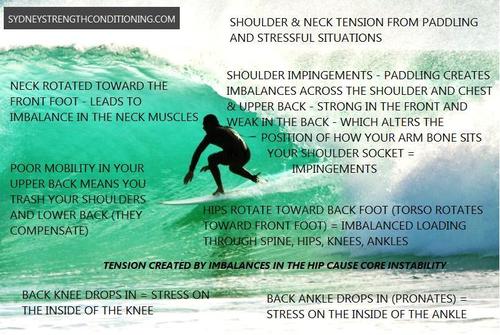Lifting, throwing, punching, wrestling, pulling, paddling, swimming and pressing with gnarly shoulders is a common problem these days. There’s too many causes to list here, but to throw out a few examples we’ve got most people walking around with hunched upper backs, heads that droop forward, chests that slump, high hips, rotated hips and too much stress. The specific reasons for the shoulder issue is individual and the first concern would be to get an assessment by a qualified rehab professional. If you go for a generalised approach and dive straight into the shoulder (symptom), you might be missing the true cause of the issue which could be anything from a “stuck” hip, or an ankle range-of-motion deficit, to a breathing limitation which drives the head forward!
THE SHOULDER
The shoulder is inherently unstable. The human shoulder is made up of three bones: the clavicle (collarbone), the scapula (shoulder blade), and the humerus (upper arm bone) as well as associated muscles, ligaments and tendons. The glenoid (shoulder socket) only contacts approx 30% of humeral (upper arm bone) head. The labrum (cartilage ring) increases joint surface and stability is reinforced by ligaments and tendons. The compromise between mobility and stability results in a large number of shoulder problems not faced by other joints such as the hip which is inherently more stable.
COMMON PROBLEM AREAS
There is a negative pressure in a healthy shoulder joint, which acts like a vacuum and keeps the humeral head glued firmly to the glenoid fossa in a healthy way during movement. Shoulder surgery can take away this negative pressure, making the joint less stable.
Shoulder injury = neck injury = jaw injury. Assess vision, hearing and bite before you look at the neck. The neck affects shoulder. Check for forward head posture. Many survival functions and reflex mechanisms reign superior to the shoulder. Paul Chek displays this idea brilliantly with his Totem Pole of importance: 1. Respiration, 2. Mastication, 3. Vision, 4. Balance/Hearing/Vestibular, 5. Atlas, 6. Digestion, 7. Emotions, 8. Reproductive, 9. Slave joints below the atlas (including shoulder). Order of importance is not necessarily numbered in this order with all cases.

Any trigger point in the body can cause muscle fibres to recruit in a non-synchronistic way, so they all turn on at once and tense up.
Anything disrupting the lower body is mirrored in the upper body. For example, a right shoulder dysfunction mirrors a left hip dysfunction in most cases. When we walk we counter rotate. Cervical and lumbar spine tend to move together, and the thoracic goes the opposite way.
Poor thoracic spine mobility and rounded curvatures. If you cannot extend your thoracic spine to neutral and beyond, do not flex the shoulder greater 140deg, meaning no overhead lifting until mobility is restored. An injured shoulder follows a screwed up thoracic spine, just as an injured shoulder follows a screwed up cervical spine.

Tingling or numbness in the little and/or ring finger = symptom of brachial plexus compression. Often arise when the lower cord of the brachial plexus is being abnormally stretched or compressed. Excessive tightness in the pec minor can cause this, as can a depressed chest, amongst others.
The anterior capsule is weakest portion of capsule relative to the forces passing through the tissue. The anterior capsule is stressed with abduction plus external rotation and with arm extension.
WHY SURFERS CAN DEVELOP SHOULDER ISSUES
The action of paddling in surfing strengthens the larger muscles around the shoulder, some of the major ones taxed being the pec major, pec minor, deltoids, upper trapezius, levator scapulae, lats and serratus posterior. These muscles when strong relative to their opposite acting muscles tend to apply upward force on the arm bone, migrating it north toward the bone above. The rotator cuff muscles when strong will apply a downward force on the ball of the arm bone.
Because of regular paddling we tend to become strong in the muscles that apply this upward force and relatively weak in the rotator cuff muscles that apply downward force. This can result in the ball of the arm bone sliding upwards in the shoulder joint. Impingement Syndrome occurs when there is abnormal contact between the rotator cuff muscles and the roof of the shoulder (acromion). Normally, a sac of tissue (bursa) sits on top of the rotator cuff, allowing the muscles to glide smoothly as the shoulder moves in different directions. When the arm is raised, the space between the rotator cuff and acromion becomes smaller. There is usually enough room in the shoulder joint for this to occur without pain. With repeated paddling, irritation and damage to the rotator cuff can occur and the bursa can swell. This decreases the space in the shoulder and compresses the rotator cuff muscles, causing pain.
A subtype of impingement is called internal impingement. This occurs as a result of imbalanced forces in the shoulder capsule, which is a fibrous tissue. In some people, the front part of the capsule is too loose, or unstable, and the back part is way too tight. This results in an imbalance of forces across the joint, especially with overhead stuff like paddling. Abnormal contact between the rotator cuff muscles and the back part of the capsule occurs, damaging the rotator cuff, capsule, and labrum and ultimately causing pain.
If this impingement is allowed to go on for an extended period of time it can cause small tears in the rotator cuff tendons, reduce blood supply and important nutrition to the shoulder joint.
Muscular imbalance is a key problem, but also so can be restricted mobility in the thoracic spine, neck, hips and shoulders. Paddling places a massive amount of stress on the rotator cuff in general, they need to work their derrière’s off to keep up with the stronger muscles that surround them. The freestyle and paddling strokes result in overdevelopment of both the shoulders internal rotators (subscapularis), compared to external rotators (infraspinatus) and the anterior chest wall musculature (pectoralis major and minor) relative to the posterior wall scapular stabilisers (rhomboids, levator scapuli, serratus anterior and middle/lower trapezius).
Rotator cuff injury is a continuum beginning with impingement and progressing to a cuff tear. The cuff tendons have areas of low blood supply, making healing more difficult after injury. As a result, the tendons degenerate with time. This is why most tears occur in late middle age.

OTHER AREAS AFFECTED THAT AFFECT THE SHOULDER THAT MAY NOT HAVE CROSSED YOUR MIND
Surfing creates tight hip flexors.
The hip rotates toward the back foot and this over time creates imbalanced loading through the spine, hips, knees, ankles.
Tension created by imbalances in the hip cause core instability; which affects your surfing and just about everything else!
Increased muscle-shortening keeps the right shoulder (natural footed) under stress and out of
alignment, decreasing its flexibility, coordination, and strength.
Muscle imbalances from being right-handed causes the right hip to draw upward as the right shoulder is pulled down, creating ongoing stress that over time affects all of the joints in the body.
The neck, chest, and the internal rotator muscles of the shoulders all shorten and limit normal range of motion.
Diagnosis
Pain at the front or back of the shoulder during or after surfing, especially when you lift your arm to paddle.
Often rounded shoulders and slight winging of the shoulder blades.
Pain in lifting the arm straight up and straight out to the side.
Shoulder instability.
Treatment
Treatment involves restoring softness to overly tight muscles (therapist, deep sports muscle therapy, trigger point release, muscle corrective therapy), flexibility in tight muscles/fascia, ensuring optimal mobility in the neck, upper back and hips, and strengthening the rotator cuff as well as weak opposing muscles.
Ideally these prehab or rehab exercises, stretches and muscle therapy should be part of the surfers training so as to prevent the condition in the first place. Learning correct paddling technique also helps to offset rotator cuff injuries. For surfers over 40, it is important to listen to your body. There is a difference in the pain we feel from muscle soreness and that from our joints. Respect the signals. It is important to rest and stretch the shoulder as needed to maintain shoulder health – especially if you want to keep surfing for life.
It’s all connected. For a lot of surfers, the front of our shoulders are very over used, while the back of the shoulder is not. There’s also a lot of funky stuff going on in other parts of the body from the ankle up.
If you’ve got funked up shoulders, your first priority will be to balance the shoulder joint first, gaining stability, offloading stress in overworked muscles, ironing out trigger points, stretching tight muscles, regaining healthy range-of-motion and taking a break from movements that are causing you pain.
Check out Surf Strength & Conditioning to learn specific surf shoulder stretches and strength exercises.